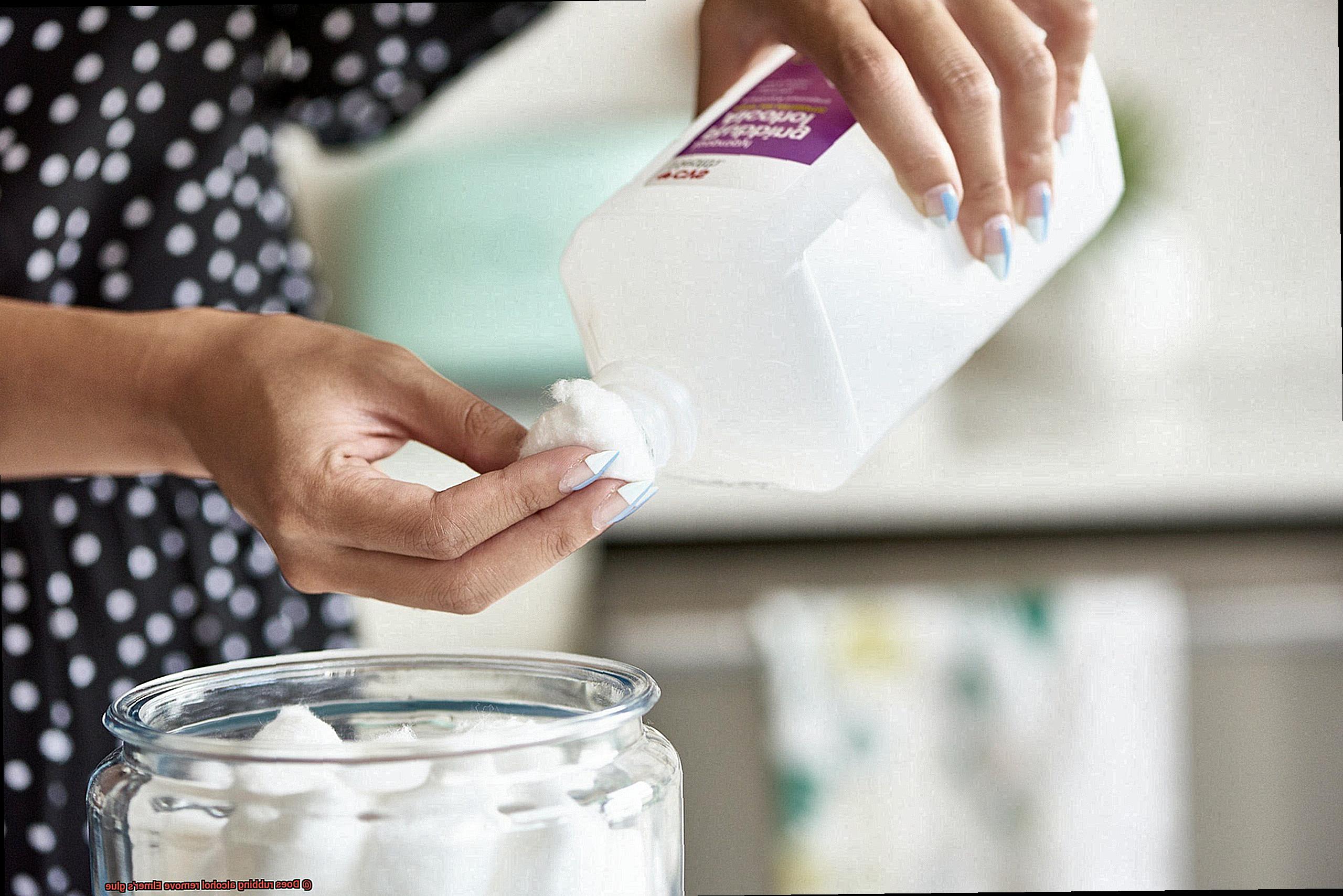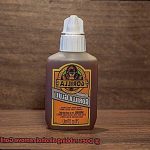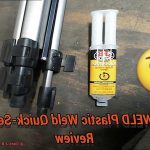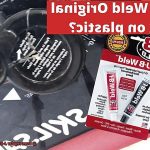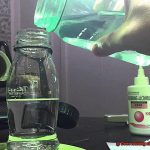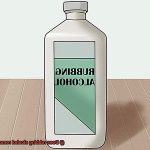Are your kids obsessed with Elmer’s glue? Does it seem like they leave a trail of sticky residue everywhere they go? Don’t worry, you’re not alone. Fortunately, there is a simple solution: rubbing alcohol.
Rubbing alcohol, also known as isopropyl alcohol, has been a household staple for decades. But did you know it’s also a powerful tool for removing stubborn glue stains? That’s right – rubbing alcohol can make those pesky Elmer’s glue stains disappear in no time.
In this blog post, we’ll take a deep dive into the world of glue removal. We’ll explore the science behind how rubbing alcohol breaks down the glue and explain the proper way to apply it. And if rubbing alcohol doesn’t work for you, don’t fret – we’ve got some backup solutions that are sure to do the trick.

Whether you’re a parent trying to clean up after an art project gone wrong or simply looking to rid your home of unwanted glue stains, this post is for you. So grab some rubbing alcohol and let’s get started on our journey to clean surfaces.
The Benefits of Using Rubbing Alcohol to Remove Elmer’s Glue
Contents
- 1 The Benefits of Using Rubbing Alcohol to Remove Elmer’s Glue
- 2 How to Use Rubbing Alcohol to Remove Elmer’s Glue
- 3 Tips for Applying Rubbing Alcohol to Remove Elmer’s Glue
- 4 Alternatives to Using Rubbing Alcohol to Remove Elmer’s Glue
- 5 Common Mistakes to Avoid When Removing Elmer’s Glue with Rubbing Alcohol
- 6 Safety Precautions When Handling Rubbing Alcohol
- 7 The Pros and Cons of Using Rubbing Alcohol To Remove Elmer’s Glue
- 8 Conclusion
Worry no more, because there is a simple and affordable solution that many people swear by: rubbing alcohol. This versatile solvent is particularly effective at dissolving the type of adhesive used in Elmer’s glue, making it an ideal choice for removing glue from a variety of surfaces such as fabrics, wood, and metal.
One of the primary benefits of using rubbing alcohol is that it is readily available and inexpensive. You can easily purchase rubbing alcohol at most drugstores or grocery stores for a reasonable price. This affordability makes it an excellent option for anyone seeking to remove glue stains frequently.
Moreover, rubbing alcohol evaporates quickly, which reduces the risk of damaging the surface being cleaned. It is a popular choice for removing glue from delicate items such as photographs or paper products. This means you can enjoy a clean surface without worrying about any damage or discoloration.
Rubbing alcohol also has disinfecting properties that are incredibly useful when removing glue from areas that may harbor bacteria or other harmful microorganisms. It can help to prevent the spread of germs and reduce the risk of infection. With rubbing alcohol, you not only get a clean surface but also a disinfected one.
To use rubbing alcohol to remove Elmer’s glue, simply apply it directly to the affected area and let it sit for a few minutes. Then, using a clean cloth or paper towel, gently rub the area until the glue starts to come off. You may need to repeat this process a few times to entirely remove the glue, but with patience and persistence, it should eventually come off.
It’s worth noting that rubbing alcohol may not be effective at removing all types of Elmer’s glue. In cases where the glue has been allowed to dry for an extended period or applied in thick layers, rubbing alcohol may not be enough to remove it entirely. In these scenarios, you may need to use a stronger adhesive remover or seek professional help.
How to Use Rubbing Alcohol to Remove Elmer’s Glue
Removing Elmer’s glue from surfaces can be a daunting task, especially when you don’t have the right tools. Fortunately, rubbing alcohol is an affordable and readily available solution that can effectively remove Elmer’s glue from various surfaces. In this post, we’ll explore the steps you need to follow to use rubbing alcohol to remove Elmer’s glue.
Step 1: Clean the Surface
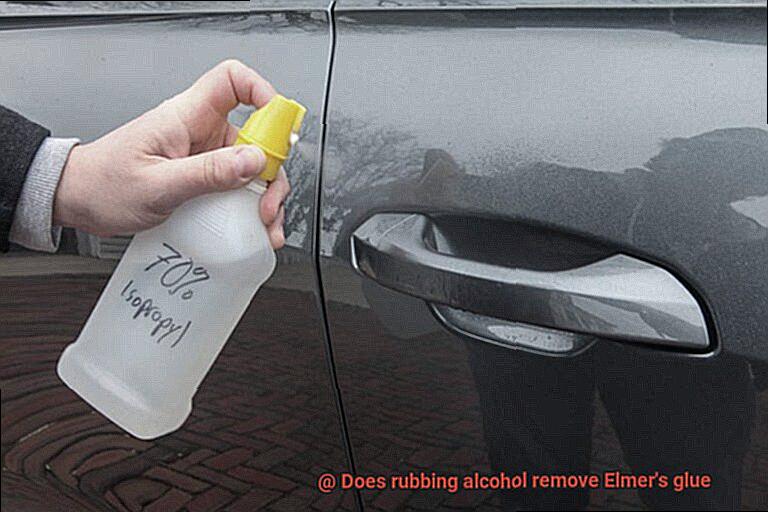
The first step in removing Elmer’s glue with rubbing alcohol is ensuring that the surface is clean and free of any debris. You can use a clean cloth or paper towel to wipe away any dirt or dust from the affected area. Cleaning the surface beforehand ensures that there won’t be any interference with the rubbing alcohol.
Step 2: Apply Rubbing Alcohol
Next, pour a small amount of rubbing alcohol onto a clean cloth or cotton ball. Make sure that the cloth or cotton ball is damp but not soaking wet. Rubbing alcohol is a powerful solvent that breaks down the glue easily, so you don’t need too much of it.
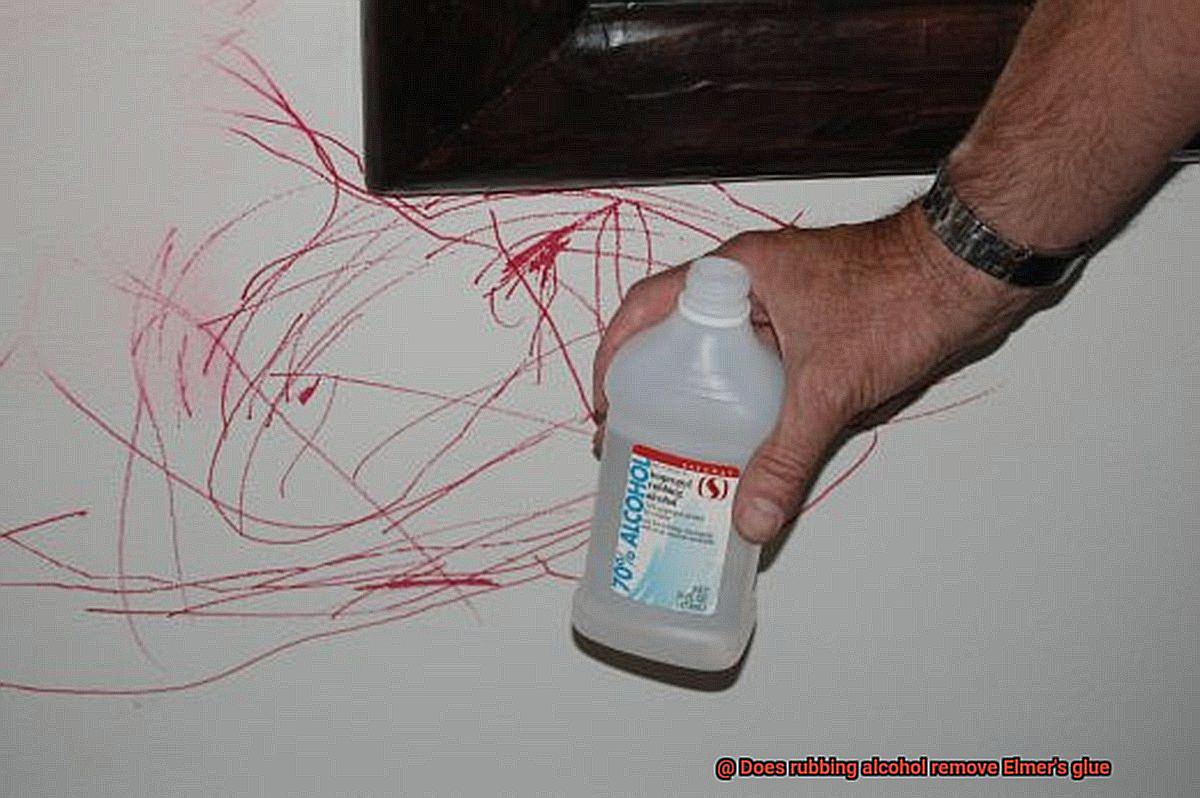
Step 3: Gently Rub the Area
Gently rub the dampened cloth or cotton ball onto the Elmer’s glue in a back and forth motion. It’s important to avoid rubbing too hard as this may damage the surface underneath the glue. Instead, be patient and persistent, focusing on removing the glue gradually.
Step 4: Repeat as Needed
If you encounter stubborn stains, you may need to repeat this process several times until all the Elmer’s glue has been removed from the surface. Avoid rushing through this process as it could lead to damage or discoloration of the surface. Instead, take your time and repeat the process until you get satisfactory results.
Step 5: Clean the Surface
Once you have removed all the glue, it’s essential to clean the surface with soap and water to remove any residual alcohol. This helps ensure that there won’t be any residual glue or rubbing alcohol on the surface that could interfere with future use.
Step 6: Test on Inconspicuous Area
It’s important to note that rubbing alcohol should not be used on certain surfaces such as leather or suede, as it may cause damage. Additionally, always test a small, inconspicuous area before applying rubbing alcohol to a large area. This helps ensure that the rubbing alcohol won’t cause any damage to the surface.
Tips for Applying Rubbing Alcohol to Remove Elmer’s Glue
Tip 1: Choose the right rubbing alcohol concentration
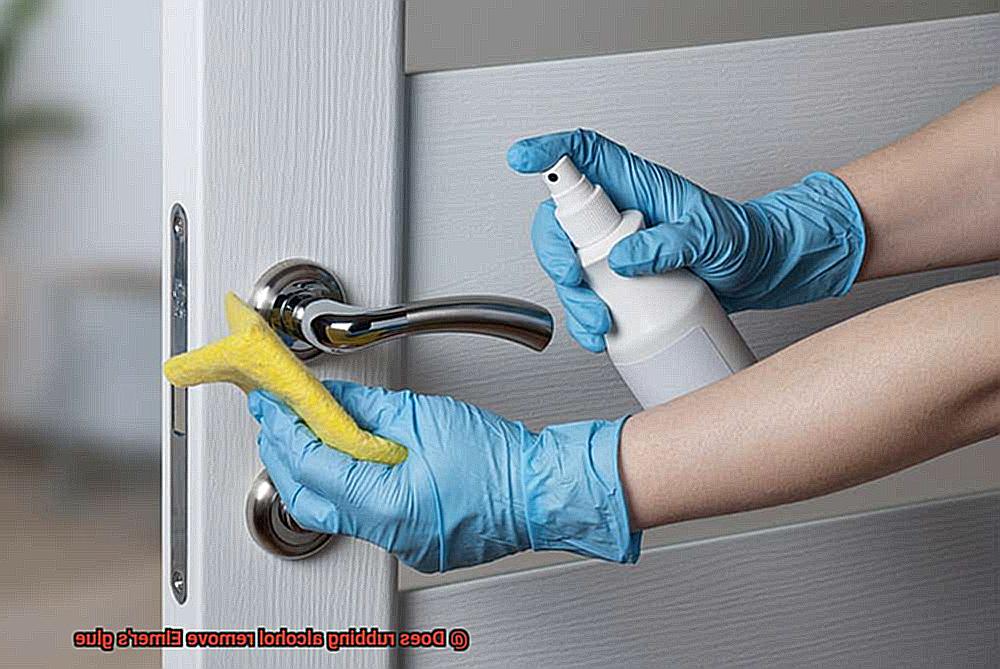
To ensure that your surfaces are not damaged, it is best to use isopropyl alcohol with a concentration of 90% or higher. This type of rubbing alcohol is strong enough to dissolve the glue without leaving behind any residue.
Tip 2: Test on a small area first
Before applying the rubbing alcohol on the entire surface, it’s important to test it on a small and inconspicuous area first. This will help you determine whether the surface can handle the strength of the rubbing alcohol.
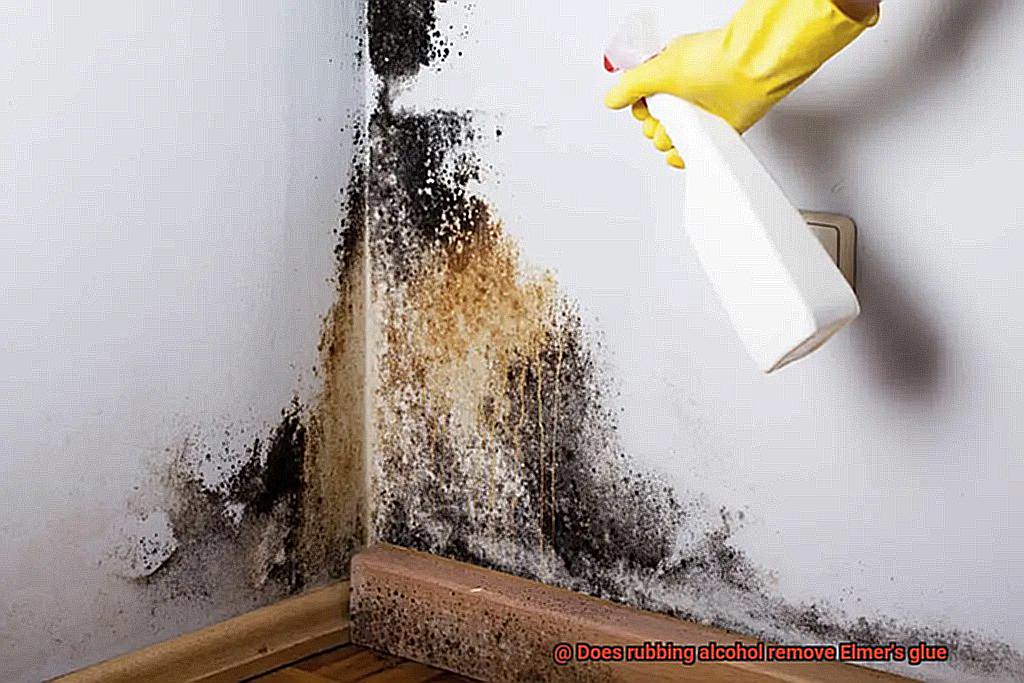
Tip 3: Let the rubbing alcohol do its job
Once you’ve confirmed that it’s safe to use, apply the rubbing alcohol directly onto the glue stain and let it sit for a few minutes. This will give the rubbing alcohol enough time to break down the glue and make it easier to wipe away.
Tip 4: Gently rub the glue stain
Using a clean cloth or paper towel, gently rub the glue stain until it starts to come off. Avoid scrubbing too hard as this can damage the surface. If necessary, repeat this process several times until all of the glue is removed.
Tip 5: Scrape off remaining glue
After giving the rubbing alcohol enough time to dissolve the glue, gently scrape off any remaining glue with a plastic scraper or your fingernail. Be careful not to scratch or damage the surface you’re working on.
Tip 6: Clean and rinse thoroughly
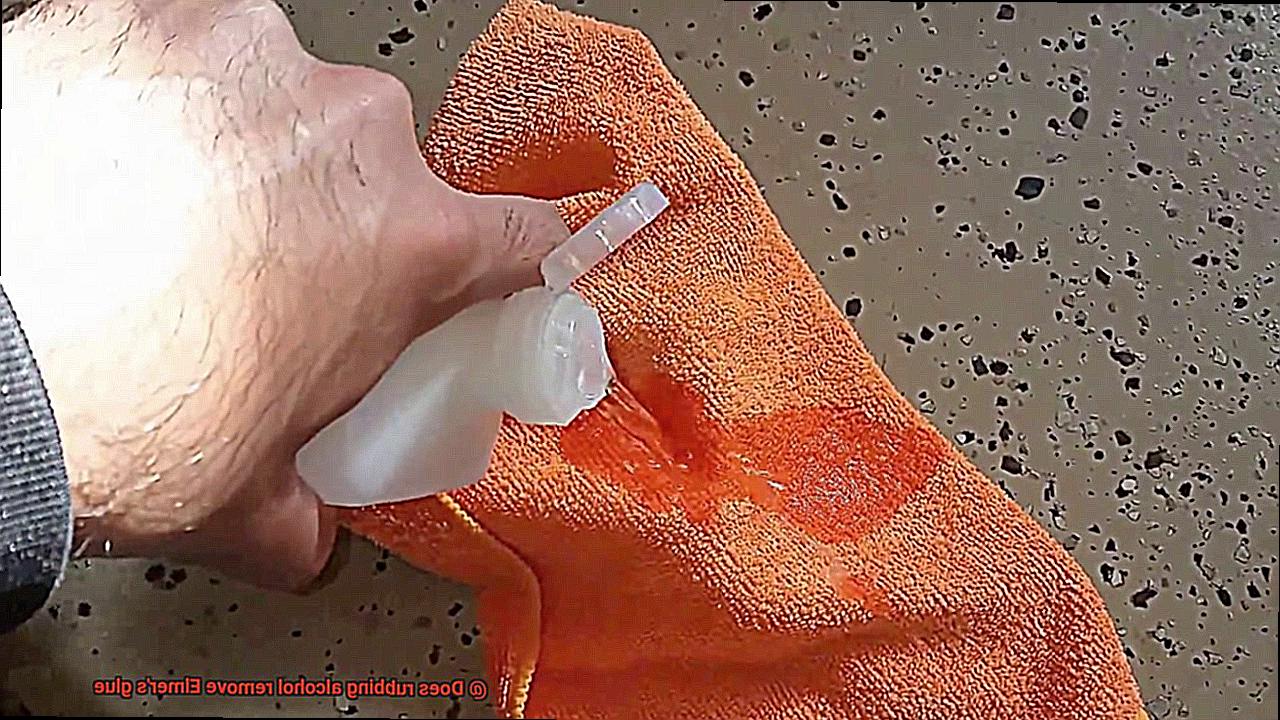
After removing all traces of Elmer’s glue, clean the surface with soapy water to remove any residue left by the rubbing alcohol. Rinse thoroughly with water and dry with a clean cloth.
Alternatives to Using Rubbing Alcohol to Remove Elmer’s Glue
While rubbing alcohol is a popular go-to for removing it, it’s not always convenient or practical. Luckily, there are several alternatives to using rubbing alcohol that can be just as effective, and even more natural.
First up, we have vinegar. This kitchen staple is a natural and non-toxic substance that can break down the adhesive properties of Elmer’s glue. Simply soak a cloth or cotton ball in vinegar and apply it to the affected area. Leave it for a few minutes before wiping away the glue with a clean cloth. It doesn’t get much easier than that.
Another option is baking soda. This versatile powder can create a paste that helps loosen and dissolve the glue. Mix baking soda with water until it forms a thick paste and apply it to the affected area. Let it sit for several minutes before wiping away the glue with a clean cloth.
Dish soap is another alternative to rubbing alcohol. It contains enzymes that can help break down the glue and make it easier to remove. Mix a small amount of dish soap with warm water and apply it to the affected area. Allow the mixture to sit for several minutes before wiping away the glue with a clean cloth.
If you’re looking for a more natural option, try using coconut oil. This natural lubricant can help loosen the glue from surfaces without damaging them. Apply a small amount of coconut oil to the affected area and let it sit for several minutes before wiping away the glue with a clean cloth.
Common Mistakes to Avoid When Removing Elmer’s Glue with Rubbing Alcohol
Removing Elmer’s glue with rubbing alcohol can be a tricky task. However, there are common mistakes that people make that can make the situation worse and even damage the surface being cleaned. To avoid these mistakes, here are some tips to keep in mind when using rubbing alcohol to remove Elmer’s glue.
Firstly, it’s essential to use enough rubbing alcohol. While it’s tempting to use only a little bit, this powerful solvent needs to be applied generously in order to dissolve the glue effectively. So don’t be shy with the amount you’re using.
Secondly, avoid scrubbing too hard. Yes, we know it can be frustrating and time-consuming when removing glue, but too much pressure can actually damage the surface you’re trying to clean. Instead, apply the rubbing alcohol and let it sit for a few minutes before gently wiping away the glue.
Thirdly, using too much force when wiping away the glue can also cause damage. So it’s important to be gentle and use a soft cloth to avoid scratching or scuffing the surface.
Lastly, always test on a small area first before applying rubbing alcohol to a larger area. Different materials and finishes can react differently to rubbing alcohol, so it’s crucial to check for any discoloration or damage before proceeding.
Safety Precautions When Handling Rubbing Alcohol
Rubbing alcohol is a common household item that has a variety of uses. From disinfecting surfaces to removing Elmer’s glue, it can be a handy tool to have around. However, it is crucial to take safety precautions when handling rubbing alcohol to avoid any potential harm.
The first and foremost safety precaution when using rubbing alcohol is to ensure proper ventilation. The fumes released by rubbing alcohol can be harmful if inhaled in large quantities. Therefore, it is best to use rubbing alcohol in a well-ventilated area. Open windows or doors in the room where you will be using rubbing alcohol and consider using a fan or an air purifier to circulate the air.
The second safety precaution is to protect yourself from direct contact with rubbing alcohol. Always wear gloves made of materials that are resistant to chemicals, such as nitrile or neoprene, to prevent skin irritation or burns. Additionally, wear eye protection in the form of safety glasses or goggles that provide full coverage to prevent any splashback that may cause eye irritation or injury.
The third safety precaution is to be mindful of the flammability of rubbing alcohol. Keep it away from heat sources and flames as rubbing alcohol is highly flammable and can ignite if exposed to high temperatures or sparks. Always store it in a cool, dry place away from any sources of heat or ignition.
Finally, ensure that you follow the instructions on the label when using rubbing alcohol. Always use the correct concentration for the task at hand and apply only to the affected area. Never ingest rubbing alcohol or apply it on broken skin.
The Pros and Cons of Using Rubbing Alcohol To Remove Elmer’s Glue
If you’ve ever found yourself with a sticky situation involving Elmer’s glue, rubbing alcohol might be the answer to your woes. However, before you start drenching everything in sight with this solvent, it’s important to weigh the pros and cons of using rubbing alcohol to remove Elmer’s glue.
Firstly, rubbing alcohol is both accessible and affordable, making it a convenient option for removing glue stains. It also evaporates quickly, leaving no trace behind, which is ideal for delicate materials that can’t tolerate extra moisture. Additionally, rubbing alcohol is versatile and can be used on a variety of surfaces without causing damage.
However, there are some drawbacks to using rubbing alcohol as a glue remover. One major concern is its flammability and potential hazards if not handled correctly. It should never be used around an open flame or heat source and should always be stored in a cool and dry place, away from children and pets. Another con to consider is that rubbing alcohol may not be effective on all types of Elmer’s glue. Some formulations of Elmer’s glue may require stronger solvents or adhesive removers to dissolve completely. Therefore, it’s crucial to test the rubbing alcohol on a small, inconspicuous area before applying it to the entire surface.
Also Read: How do you remove glue from a car without damaging paint?
Conclusion
In summary, rubbing alcohol is a versatile and cost-effective solution for tackling Elmer’s glue stains on various surfaces. Its rapid evaporation rate, affordability, and disinfecting properties make it an ideal choice for frequent use.
However, it’s important to note that not all types of Elmer’s glue are susceptible to rubbing alcohol removal. Hence, it’s recommended to test a small area before applying the solution to the entire surface.
When using rubbing alcohol as a cleaning agent, ensure that you follow the right steps and safety measures. These include pre-cleaning the surface, applying enough rubbing alcohol, avoiding excessive scrubbing or force when wiping off the glue residue, testing on a small area first, and taking precautions against direct contact with rubbing alcohol.
If you find that rubbing alcohol doesn’t work for you or prefer more natural alternatives, there are several options such as vinegar, baking soda, dish soap or coconut oil that can be equally effective.

